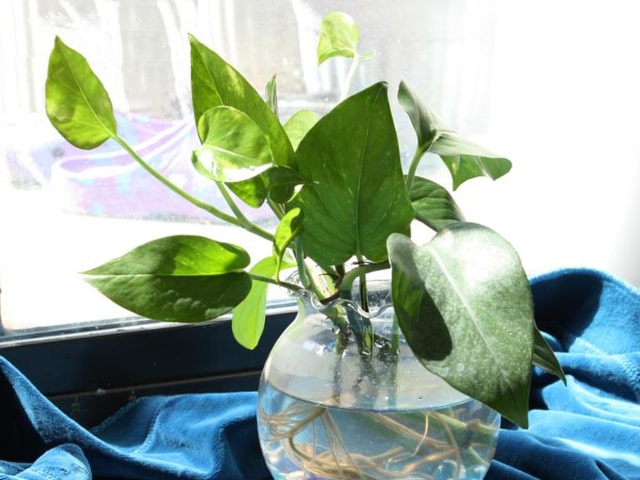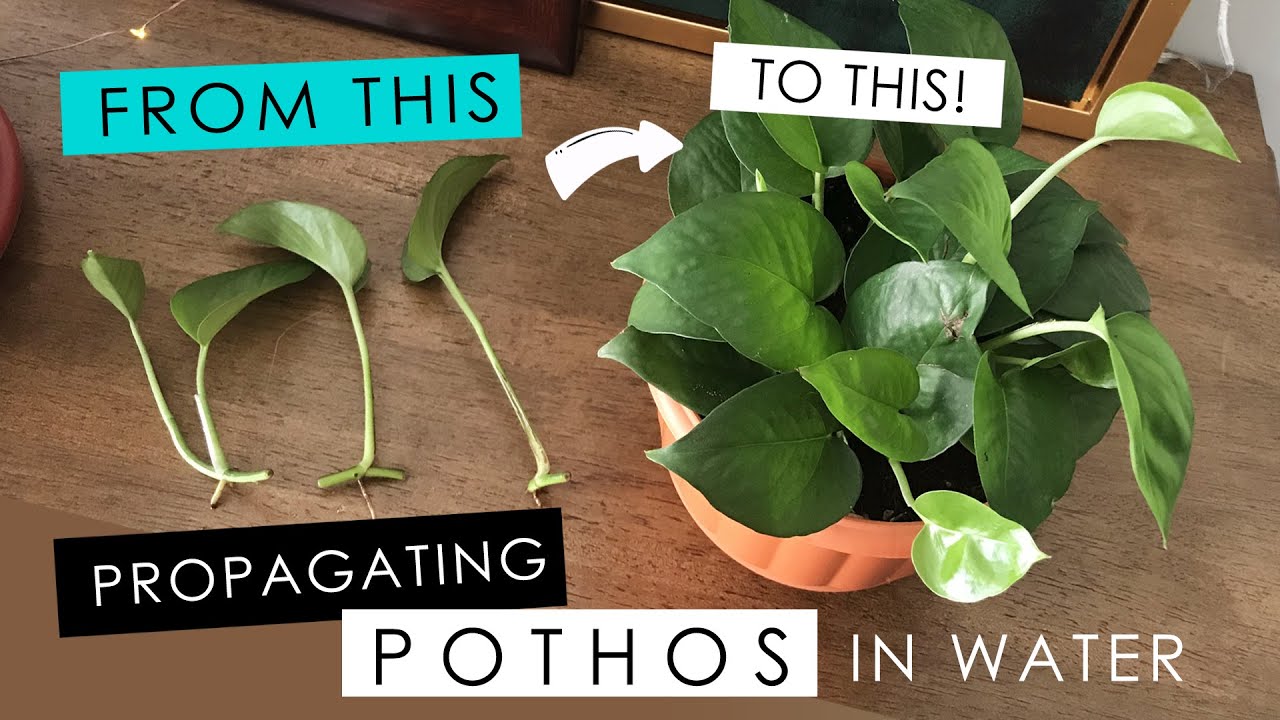To water a pothos plant, thoroughly soak the soil until it is evenly moist and allow the top inch of soil to dry out before watering again. Pothos plants should not be overwatered, as it can lead to root rot.
Caring for indoor plants like pothos requires proper watering. Knowing the correct way to water your pothos can help ensure its health and longevity. Pothos, also known as devil’s ivy, is a popular houseplant characterized by its beautiful, trailing vines and heart-shaped leaves.
It is known for its tolerance to various light conditions and its ability to thrive in low light environments, making it a favorite choice for both novice and experienced indoor gardeners. However, understanding the correct watering techniques is crucial to prevent issues like overwatering or underwatering, which can affect the overall health of the plant. We will explore the best practices for watering your pothos plant to keep it thriving and beautiful.

Credit: www.sundaygardener.net
How to Water Pothos: Step by Step Guide
Choosing The Right Pot And Soil
Choosing the right pot size and material is crucial for watering your pothos plant. A pot that is too small may hinder root growth and restrict water absorption. Opt for a pot that allows room for the roots to spread out.
Additionally, consider the material of the pot. Clay pots are porous and allow excess moisture to evaporate, preventing overwatering. However, if you tend to forget to water your plants, a plastic pot may be a better choice as it retains moisture for longer.
When it comes to the soil mix, a well-draining blend is ideal for pothos. Use a mix of peat moss, perlite, and potting soil for efficient water drainage. By selecting the appropriate pot size, material, and soil mix, you can ensure optimal water distribution for your pothos plant.
Understanding Pothos Watering Needs
Understanding the watering needs of pothos is crucial for their overall health and well-being. Assessing the watering frequency is essential to ensure that the plant receives the right amount of water. You can determine the optimal watering amount by monitoring the plant’s response and considering factors like the humidity level and pot size.
Overwatering can lead to root rot, so it’s important to avoid excessive watering. On the other hand, underwatering can cause the leaves to wilt and the plant to become weak. Find a balance by checking the moisture level of the soil regularly and adjusting your watering schedule accordingly.
By providing proper water to your pothos, you can help it thrive and enjoy its beauty for years to come.
Implementation Of Proper Watering Techniques
Properly watering pothos is essential for their overall health and growth. To ensure successful implementation, several factors must be considered. Firstly, humidity levels play a crucial role. Pothos thrive in environments with moderate humidity, so it’s important to maintain suitable moisture levels.
Secondly, varying temperatures can impact their water requirements. Adjust watering frequency accordingly, depending on seasonal changes. Additionally, recognizing signs of underwatering and overwatering is crucial. Common symptoms of underwatering include dry leaves and wilting, while overwatering is indicated by yellowing foliage and root rot.
To water effectively, choosing the right tools is vital. Utilize methods like bottom watering or using a watering can with a spout for precise water distribution. Lastly, it’s essential to avoid water-related issues by ensuring proper drainage and not allowing excess water to accumulate.
With these guidelines, you can effectively water your pothos to promote their optimal growth and vitality.
Additional Tips For Proper Pothos Care
Properly watering your pothos plant is essential for its health and growth. Understanding the importance of drainage is key. During different seasons, adjust your watering routine accordingly. In the summer, increase the frequency of watering to keep the soil moist.
However, in the winter, reduce watering to prevent waterlogging. There are certain times when you should avoid watering your pothos, such as during freezing temperatures or when the soil feels still damp. Common watering mistakes can be easily addressed by adjusting your watering technique.
If you’ve accidentally overwatered or underwatered your pothos, there are strategies to revive it. Monitor the soil moisture and adjust your watering accordingly to keep your pothos thriving.
Frequently Asked Questions On How To Water Pothos
Do You Water Pothos From Top Or Bottom?
Water pothos from the top to ensure proper hydration and avoid waterlogging the soil.
Can I Soak A Pothos To Water It?
Yes, you can soak a pothos plant in water for a short period of time to hydrate its roots.
How Do I Know If My Pothos Needs Water?
To determine if your pothos needs water, check the soil’s moisture level by feeling it with your fingers. If the top inch feels dry, it’s time to water your plant.
How Often Should I Bottom Water My Pothos?
Bottom water your pothos every 1-2 weeks for optimal growth and to prevent overwatering.
Conclusion
Watering your pothos plants correctly is essential for their overall health and well-being. By following the tips mentioned in this blog post, you can ensure that your pothos plants receive the right amount of water to thrive. Remember to check the soil moisture regularly and adjust your watering schedule accordingly.
Overwatering can lead to root rot, while underwatering can cause the leaves to wilt and discolor. Aim to keep the soil slightly moist, but not waterlogged. Additionally, using filtered or distilled water can prevent the build-up of chemicals and minerals, which may harm the plant.
Proper drainage is also crucial to prevent water from sitting at the bottom of the pot. By providing your pothos plants with adequate and mindful watering, you can enjoy their lush, vibrant foliage for years to come.

